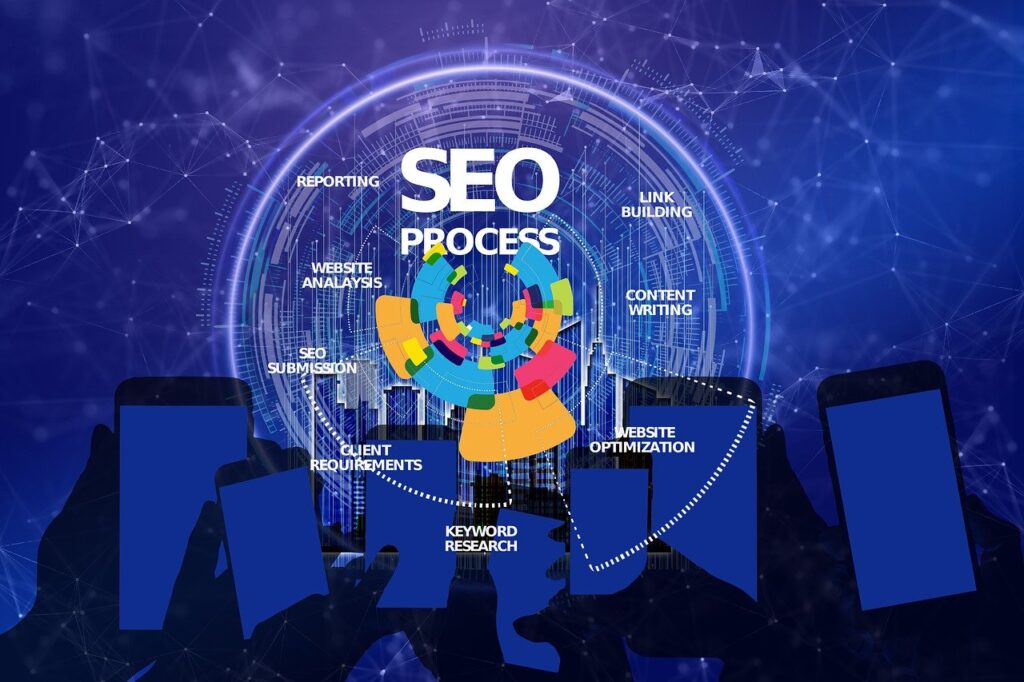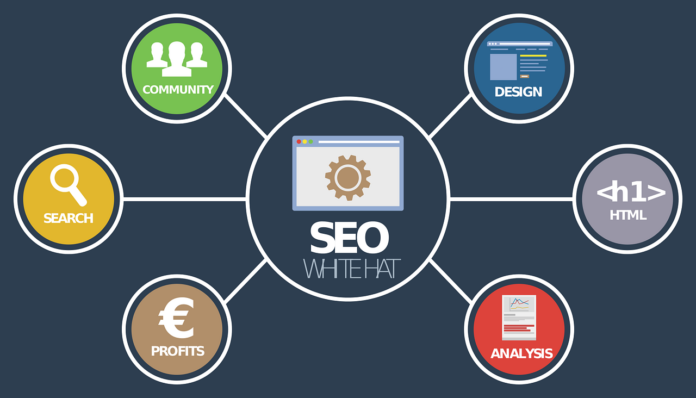SEO stands for Search Engine Optimization. It refers to the practice of optimizing websites and web pages to improve their visibility and ranking in search engine results pages (SERPs). The goal of SEO is to increase organic (non-paid) traffic to a website by making it more attractive and relevant to search engines.
Search engines like Google, use complex algorithms to determine the relevance and ranking of web pages when users search for specific keywords or phrases. SEO involves various techniques and strategies that help websites align with these algorithms and improve their chances of ranking higher in search results.
SEO is divided into many categories. Explore the following five types of SEO and learn how to optimize your site.
On-Page SEO
This type of SEO focuses on optimizing individual web pages to improve their search engine rankings and attract organic traffic. On-Page SEO techniques include optimizing content, meta tags, headings, URLs, and internal linking within a website.
The goal is to make the website’s pages more relevant, user-friendly, and easily accessible to search engine crawlers.
Key elements of on-page optimization include:
- Keyword research: Identifying relevant keywords that users are searching for.
- Content optimization: Creating high-quality, relevant content that incorporates targeted keywords.
- Title tags and meta descriptions: Writing compelling and descriptive titles and snippets for search engine listings.
- URL structure: Creating clean and user-friendly URLs that include relevant keywords.
- Heading tags: Using heading tags (H1, H2, etc.) to structure content and highlight important sections.
- Internal linking: Linking related pages within the website to improve navigation and user experience.
Off-Page SEO

Off-page SEO refers to activities that are done outside the website to improve its visibility and authority in search engine rankings. The primary objective is on acquiring high-quality backlinks from other reputable websites.
Off-page SEO techniques include link building, social media marketing, influencer outreach, and online reputation management.
- Link building: Actively seeking and acquiring high-quality backlinks from relevant and authoritative websites.
- Social media marketing: Using social media platforms to promote and share content, which can lead to increased visibility and backlinks.
- Online reputation management: Building a positive online reputation through customer reviews, testimonials, and brand mentions.
- Influencer marketing: Collaborating with influential individuals or organizations to gain exposure and build credibility.
These activities help build the website’s reputation, credibility, and popularity, which indirectly affects its search engine rankings.
Technical SEO
Technical SEO is a type of SEO that involves optimizing the technical aspects of a website to improve its crawling, indexing, and overall visibility in search engines. It focuses on the website’s backend and infrastructure to ensure that search engine crawlers can efficiently access and understand its content.
Technical SEO includes optimizing website speed, mobile-friendliness, website architecture, XML sitemaps, robots.txt files, canonical tags, and structured data markup. The goal is to provide a seamless user experience and facilitate search engine crawling and indexing.
Technical SEO consists of various essential tasks, such as:
- Submitting your sitemap to Google
- Establishing a site structure that is SEO-friendly
- Enhancing your website’s speed and performance
- Ensuring mobile-friendliness for optimal user experience
- Identifying and resolving duplicate content problems.
Local SEO
Local SEO focuses on optimizing a website to improve its visibility and rankings in local search results. It’s specifically aimed at businesses targeting a local audience or serving customers in a specific geographic location.
Local SEO is important for businesses with physical storefronts. While traditional SEO strategies cater to a global or national audience, local SEO specifically targets regional search results. By employing localization techniques, your business can increase its visibility in searches for local companies, such as “KFC near me.”
The goal of local SEO is to increase a business’s online visibility when users search for products or services within a specific area. Local search results are often displayed with a map and a list of businesses related to the search query.
Local SEO involves various strategies and techniques, including:
- Google My Business (GMB) Optimization.
- NAP consistency.
- Local citations.
- Online reviews.
- Localized content.
- Local link building.
- Location pages.
- Social media and local engagement.
E-Commerce SEO

E-commerce SEO is the practice of optimizing online stores and e-commerce websites to improve their visibility and rankings in search engine results pages (SERPs). It involves implementing strategies and techniques that aim to increase organic (non-paid) traffic and improve the chances of attracting potential customers to the e-commerce site.
E-commerce SEO is a cost-effective strategy to drive traffic to your online store compared to paid search. By optimizing your website, it improves its visibility and ranking in search engine results when people search for relevant products or services.
Appearing in the search engine results pages (SERPs) is crucial to capture the attention of potential and qualified customers for your e-commerce business. Conducting competitor research, emphasizing homepage SEO, and strategically architecting your website can optimize your e-commerce site, driving traffic and increasing search volumes. This ultimately enhances your chances of reaching and converting your target audience.
Some key aspects of e-commerce SEO include:
- Keyword research.
- On-page optimization.
- Product page optimization.
- Technical SEO.
- Site structure and navigation.
- User experience (UX)- A positive user experience can improve customer satisfaction and increase conversions.
- Social media integration.
- Local SEO for E-commerce. This includes optimizing for local keywords, creating location-specific landing pages, and managing online reviews and directories.
- Backlink building.


